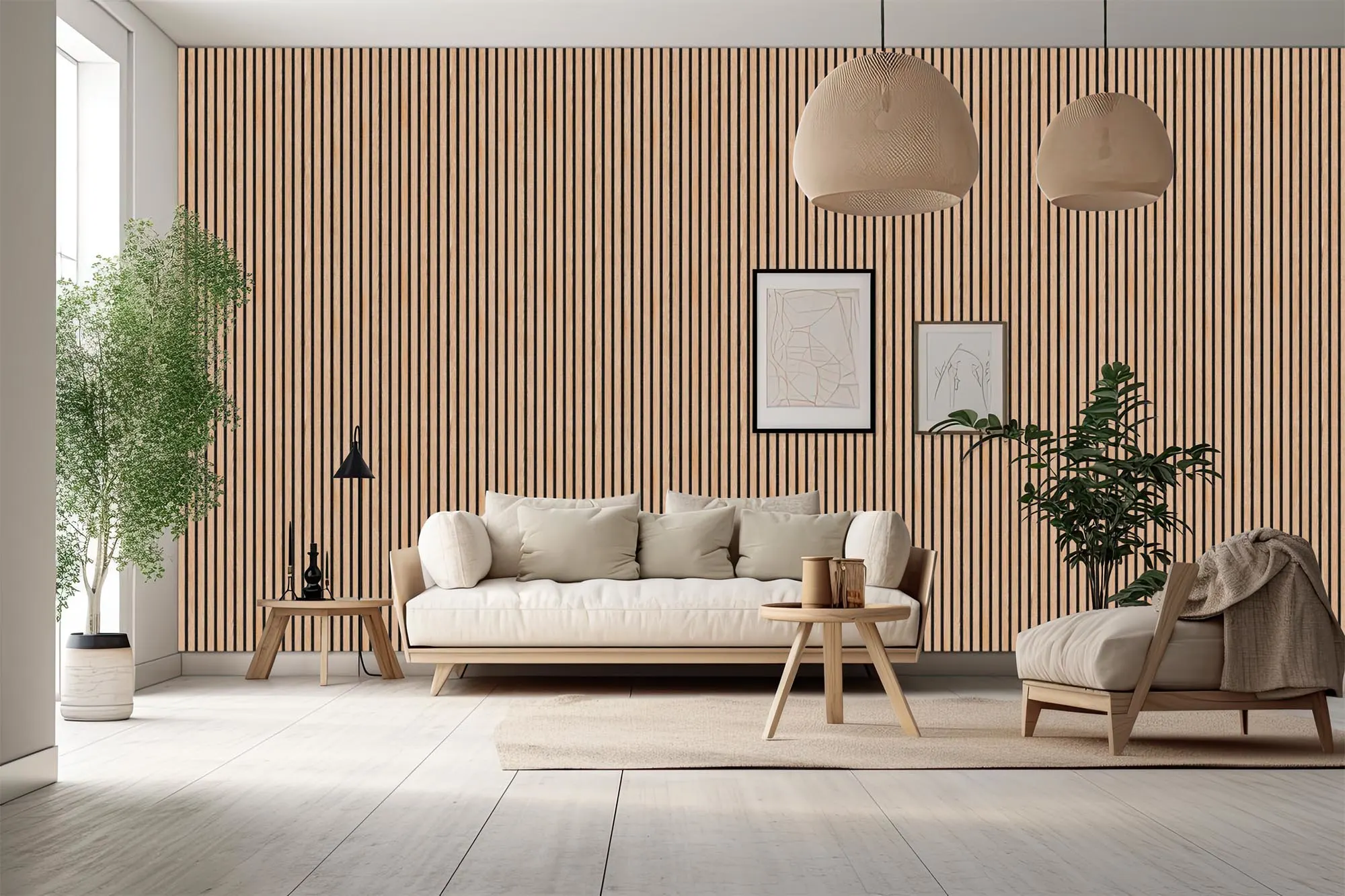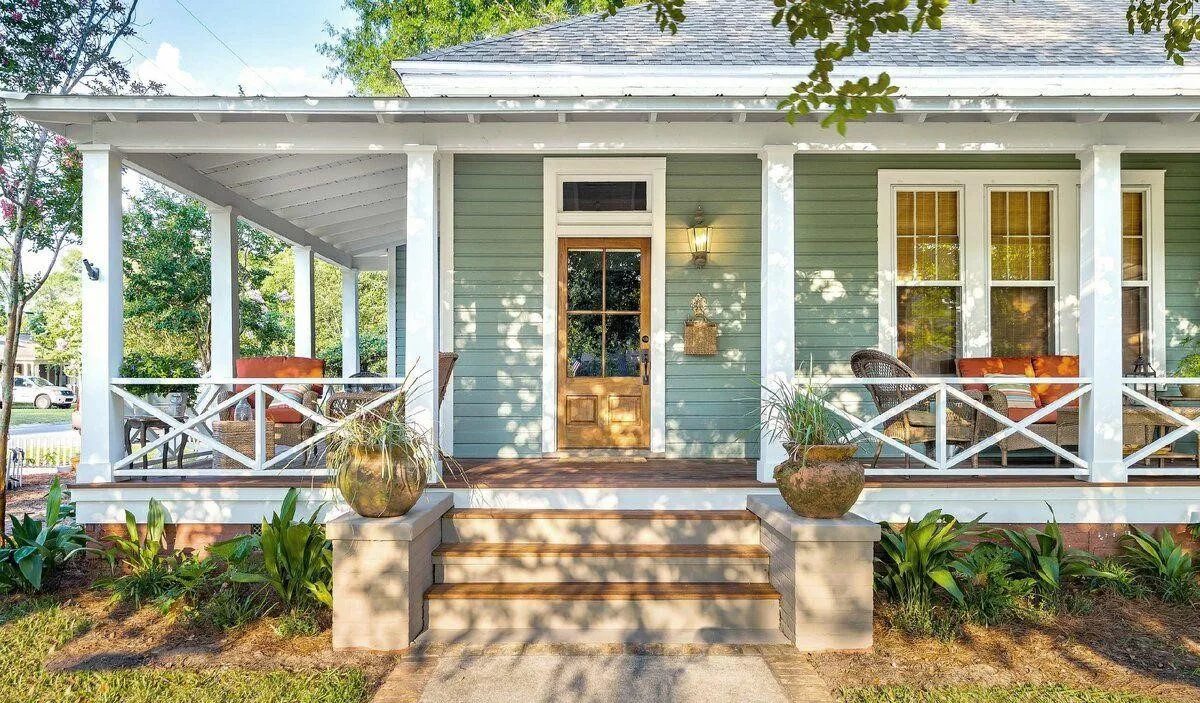Before delving into the design ideas for your bedroom wardrobe, let's address a common functionality challenge in small homes. Accommodating a large custom closet in a small room is often impractical, which can be disheartening for readers embarking on a home makeover.
So, let's first explore some small closet ideas before diving into the exciting design concepts.
1. Small closet ideas
/small-closet-wardrobe-design.webp)
Here are a few well-defined ideas you can use for your closet system in a small room:
Install built-in storage solutions with lots of shelving and an armoire door.
Use cabinetry with both pull-out drawers on the top and cubbies on the bottom.
Opt for portable, foldable wardrobes in guest rooms.
Unleash your creativity with some DIY closet systems.
Take the minimalist route and infuse wardrobe designs with sliding doors.
Use tall, freestanding closets with maximum vertical space instead of broad, wide ones.
Create a separate hanging space along with a reach-in wardrobe closet for suits and dresses extraordinaire.
2. Bedroom wardrobe ideas for larger rooms
/bedroom-wardrobe-design.webp)
Now, when you design bedrooms in your home, you need the different components to blend seamlessly into your interior design theme. If you have ornate bedposts and beautiful décor, then your wardrobe design must be just as stunning as the rest of your interior design ideas.
Therefore, when you have ample closet space, why not maximize your home interiors with exquisite closet ideas? You can have a master closet in a master bedroom with a designated dressing room, akin to that of Christian Grey, or opt for minimalist themes and modular sliding door wardrobes.
Here are a few ideas to get started on wardrobe design ideas with your interior designer:
a) Check the available space to choose an appropriate size of closet
b) Much like any piece of furniture and fixture in your beautiful home, you need to start by evaluating the amount of space you have available to fit a closet.
c) If you have an expansive space after installing the bed, side tables, and overall room décor, then consider a walk-in closet or master closet. You can install a hanging space for your expensive suits and dresses. Consider segregated shelving for daily wear and inexpensive clothes and pull-out drawers to organize your accessories such as cravats, belts, sunglasses, watches, etc. You can also install a sweet dressing room inside the closet with cubbies to hold your tie pins, broaches, hair accessories, earrings, bracelets, and whatnot.
d) If, on the other hand, your closet space is limited yet enough for a large-sized closet, then you can choose a broad reach-in closet with hangers and shelving. You can choose a swinging door if it does not interfere with the available space in your bedroom or install sliding doors for convenience.
e) If, however, you find the space too limited for either of these, then you can choose a tall closet design with intensive shelving. Check out the closet organization trends on the internet and use tension rods and DIY cubbies to make extra space in your freestanding closet.
3. Choose your desired type of wardrobe design
Speaking of the types of closets you can incorporate, you also need to pay attention to the style and capacity of your closet.
In modern home interior design, a built-in modular closet with substantial shelving and hanging space is quite popular. These closets also come with drawers to store your valuables.
For a more traditional wardrobe design, you can choose from a range of wooden or stainless steel designs or almirahs. These wardrobes may seem smaller in size, but they provide adequate storage space. They also have a small closet space allocated for hanging small items of clothing, along with drawer space and a small locker with a hidden compartment for your valuables.
You can also opt for minimalist designs with sliding glass doors and broad storage shelves to neatly arrange all your belongings. These also work well for guest rooms where the space is not in constant use and doesn’t call for extensive closet organization.
In terms of wardrobe design, you also need to consider the built-in, freestanding, and walk-in closet options. Each has its own merits, but the choice depends on what kind of design best suits your preferences.
4. Evaluate your need for storage space
/wardrobe-design-storage.webp)
When choosing a closet design, you also need to consider your need for storage. What kind of storage solutions work best for the outfits and accessories you own.
Ask yourself, do you absolutely need hanging space or can you fold your clothes and store them away?
Do you need a designated space to store your winter wear?
Do you need drawers in your closet or are you more comfortable with a cabinet for your delicates, socks, and other necessities?
Do you want to store your accessories in your closet or designate a space in your dressing area for them?
These questions will help you determine what kind of closet design and how much storage space you need.
5. Pick a material for your custom closet
/wardrobe-closet-material.webp)
Now that you've determined the style, size, and design of your desired closet, let’s explore the material options.
Sustainable and sturdy materials for your shelves are essential. While you could consider using iron or steel shelves, it's crucial to install shelf paper to prevent rusting and chafing on your clothes.
A more ideal solution is wooden shelving, and you have a few options here. You can opt for laminate on MDF (Medium Density Fiberboard), a sturdy material with smooth surfaces capable of handling the load of even your winter wear.
You may also choose expensive wood for the overall construction of the closet. Pine, teak, cedar, ply, etc., are all excellent choices. Take the time to check the quality of the wood with your custom closet designers.
For the door, you can choose intricate armoire artistry on wood or glass panels. Alternatively, you can select a combination of the two, where the door's panel is glass, and the frame is wooden. Choose between opaque glass, translucent glass, or a transparent piece based on your preferences.
6. Embrace innovative storage solutions for functionality
/wardrobe-design-with-storage-function.webp)
Don’t limit yourself to traditional closet designs for your storage needs. Embrace creativity with hanging shelves, built-in cubbies, or cabinets featuring numerous drawers.
While a walk-in closet is ideal for the master bedroom, in a kid’s room, you might opt for a small one-door wardrobe accompanied by a cabinet of drawers to facilitate organization.
For a guest room, consider an appropriately-sized cabinet with two or more large drawers and cubbies with doors. You can also select one with full-length drawers to maximize storage space.
7. Light up your wardrobe
/wardrobe-design-with-lighting.webp)
Firstly, consider adding LED lights inside your wardrobe to provide essential brightness. However, this is not necessary for walk-in closets, where accent lighting and bright lights are crucial to illuminate the large closet space. Additionally, you can enhance your master closet by hanging wall art or installing hanging décor for a touch of elegance.
As for freestanding wardrobes, you have the option to line the entire perimeter with string lights or incorporate overhead lighting just above the closet door. Pendant lighting is also a choice for added effect, but be mindful that it may affect your free space and vision.
8. Accessorize
/traditional-wardrobe-design-1536x1152.webp)
In conclusion, even though your closet primarily serves as a storage solution, there's no reason it can't be aesthetically pleasing.
Consider repainting your closet to match the color palette of your bedroom design ideas and adorn it with personalized items. Collect miniature models from each place you visit, decorate with decals, whimsical stickers, or comic book characters, especially for kids' rooms.
If you prefer to maintain a classic closet look, you can enhance it with ornate doorknobs, beautifully handcrafted wooden door designs, or plate glass featuring exquisite patterns. This way, your closet retains simplicity while adding vibrancy to the overall interior design of your home.
The interior design of your house extends beyond the living room, home office, kitchen, or bedroom walls. Every piece of furniture and every decor item contributes to your home interiors, and your closet plays an equally important role. Therefore, choose the pattern and design with care.
Also Read: Revamp Your Home with the Latest Interior Design Trends of 2024


/wardrobe-design-ideas.webp)





_1767164061.webp)


Ans 1. An open-system wardrobe is easy to access and gives you full visibility into its contents. The same way, hinged wardrobe styles open out into the room which can take up more space in smaller rooms. Based on your requirements, you can easily find wardrobe styles that suit your interiors.
Ans 2. There's a lot more to designing a wardrobe than meets the eye, but these comprehensive planning steps are sure to deliver Assess your needs. ... Do some self-analysis. ... Measure the site. ... Decide what needs to be stored. ... Factor in site limitations/obstructions. ... Narrow down your personal priorities. ... Learn from past experiences.
Ans 3. Be careful with the style of wardrobe Therefore, take note of the type of furniture that you have in your bedroom. If there is a specific kind of wood used in your room, try to find a wardrobe that complements the texture of the wood design. Similarly, you should also take into account the paint colour in your room.
Ans 4. The best colours for bedroom wardrobes are neutrals like white, grey and beige. Should wardrobes be the same colour as walls? The wardrobe should complement your room. As such, it can be the same colour as your walls or a complementing shade.
Ans 5. Sliding door wardrobes are the best fit for small rooms with limited space where it's hard to access a swing door wardrobe. There are various sliding mechanisms like overlapping doors mechanisms or in-line door mechanisms to fit different budgets.